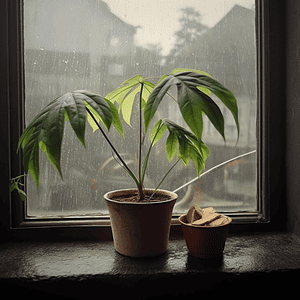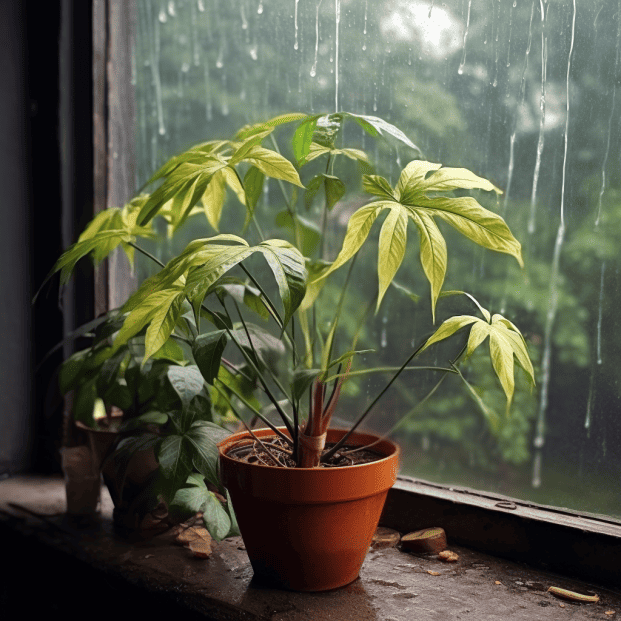Anthurium pedatoradiatum, also known as Anthurium Fingers, is a unique and charismatic plant that has recently gained popularity in the houseplant market. This species of plant belongs to the Anthurium genus and is native to southern Mexico, specifically in the Mexican states of Veracruz, Tabasco, and Chiapas. The plant is known for its finger-like leaves, which fan out to mirror that of a hand.
One of the most unique things about Anthurium pedatoradiatum is that it is a terrestrial plant, meaning it grows naturally in soil. Its leaves have deep finger-like sections, making it a striking addition to any indoor garden. The plant can grow up to 3.3 feet (1 meter) tall when kept indoors, and its foliage is the center of attention. Its striking hand-like leaves give this plant a stunning appearance, making it a popular choice for indoor plants around the world.
Overall, Anthurium pedatoradiatum is a beautiful and easy-to-grow plant that can add a touch of uniqueness to any indoor garden. In this article, we will discuss everything you need to know about caring for this plant, including its ideal growing conditions, watering and fertilizing needs, and common pests and diseases to watch out for.
Overview
Anthurium Pedatoradiatum, also known as Anthurium Fingers, is a stunning plant species that belongs to the Anthurium genus. This evergreen perennial plant is native to southern Mexico and is known for its unique, hand-like leaves. Anthurium Pedatoradiatum is a terrestrial plant, which means that it grows naturally in soil.
Description
The leaves of Anthurium Pedatoradiatum are the center of attention, with their deep finger-like sections that give the plant a stunning appearance. The plant grows up to 3.3 feet (1 meter) tall when kept indoors. Juvenile leaves emerge roughly heart-shaped before developing deeper lobes. When mature, leaves may have as many as 13 “fingers”!
Species
Anthurium Pedatoradiatum is a species of plant in the Anthurium genus. It is native to southern Mexico and is classified as a terrestrial plant. Its natural habitat is from sea level up to 1,000 meters (3,300 ft) in the Mexican states of Veracruz, Tabasco, and Chiapas.
Care
Anthurium Pedatoradiatum is a relatively easy plant to care for. It prefers bright, indirect light, and well-draining soil that is kept moist but not waterlogged. It is important to avoid overwatering this plant, as it can lead to root rot. Regular misting is also recommended to keep the humidity levels high.
Propagation
Anthurium Pedatoradiatum can be propagated through stem cuttings or offshoots. When propagating through stem cuttings, it is important to use a sharp, sterile knife to cut a healthy stem from the parent plant. Place the cutting in a well-draining soil mix and keep it moist until it develops roots and new growth. Offshoots can also be separated from the parent plant and potted in their own containers.
Common Problems
One of the most common problems with Anthurium Pedatoradiatum is overwatering, which can lead to root rot. It is important to allow the soil to dry out between waterings and to avoid watering the plant too frequently. Other common problems include pests such as spider mites and mealybugs, which can be treated with insecticidal soap or neem oil.
Growing Tips
To keep Anthurium Pedatoradiatum healthy and thriving, it is important to provide it with the right growing conditions. This includes bright, indirect light, well-draining soil, and regular misting to maintain high humidity levels. The plant also benefits from regular fertilization during the growing season.

Conclusion
Anthurium Pedatoradiatum is a stunning plant species that is relatively easy to care for. By following the right care instructions and providing it with the right growing conditions, you can enjoy the unique and beautiful appearance of this plant for years to come.
Frequently Asked Questions
How often should I water Anthurium pedatoradiatum?
Anthurium pedatoradiatum prefers to be kept evenly moist, but not waterlogged. It is important to let the soil dry out slightly between waterings to prevent overwatering, which can lead to root rot. Watering once a week is usually sufficient, but it may vary depending on the humidity and temperature of your environment.
What kind of soil does Anthurium pedatoradiatum need?
Anthurium pedatoradiatum requires well-draining soil that is rich in organic matter. A mix of peat moss, perlite, and orchid bark is a good option. It is important to avoid using heavy soils that retain moisture, as this can lead to root rot.
How much light does Anthurium pedatoradiatum require?
Anthurium pedatoradiatum prefers bright, indirect light. Direct sunlight can scorch the leaves, while too little light can cause the plant to become leggy and weak. A north-facing window or a spot with filtered light is ideal.
How do I propagate Anthurium pedatoradiatum?
Anthurium pedatoradiatum can be propagated through division or by taking stem cuttings. To propagate through division, carefully separate the plant into smaller sections, making sure each section has roots attached. To propagate through stem cuttings, take a 4-6 inch cutting with at least one node and place it in a pot with moist soil. Keep the soil moist and warm until the cutting has rooted.
What are common pests that affect Anthurium pedatoradiatum?
Common pests that can affect Anthurium pedatoradiatum include spider mites, mealybugs, and scale insects. Regularly inspect your plant for any signs of infestation, such as webbing, sticky residue, or small bumps on the leaves. If you notice any pests, treat the plant with an insecticidal soap or neem oil.
What temperature range is best for Anthurium pedatoradiatum?
Anthurium pedatoradiatum prefers temperatures between 60-85°F (15-29°C). It is important to protect the plant from cold drafts and temperatures below 50°F (10°C), as this can cause damage to the leaves and root system.


